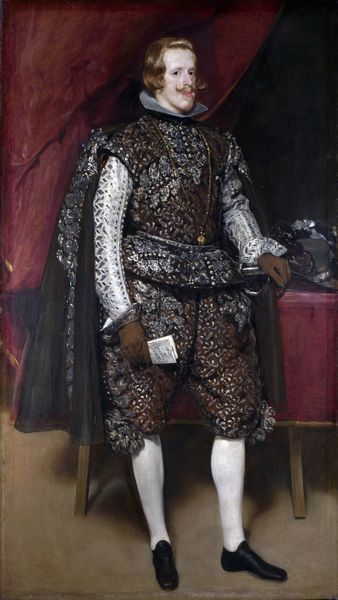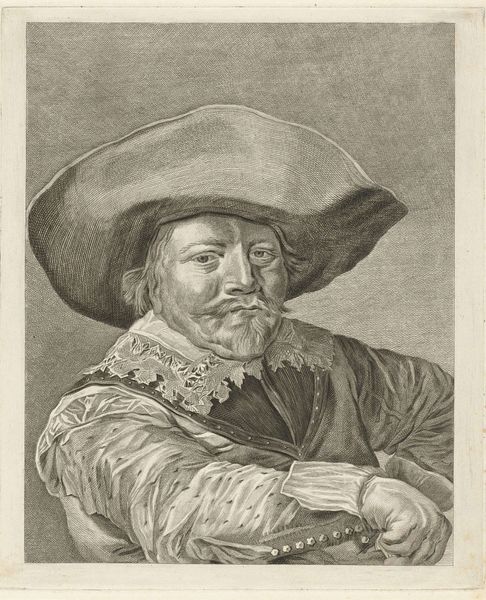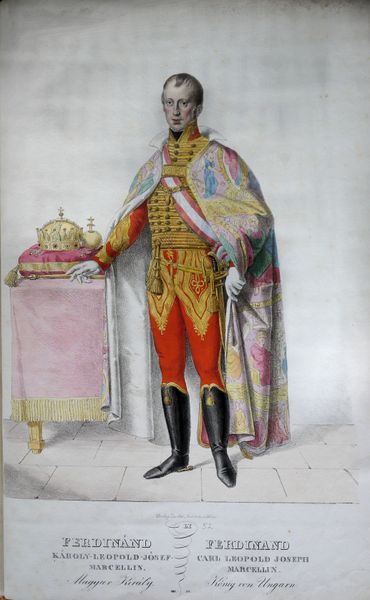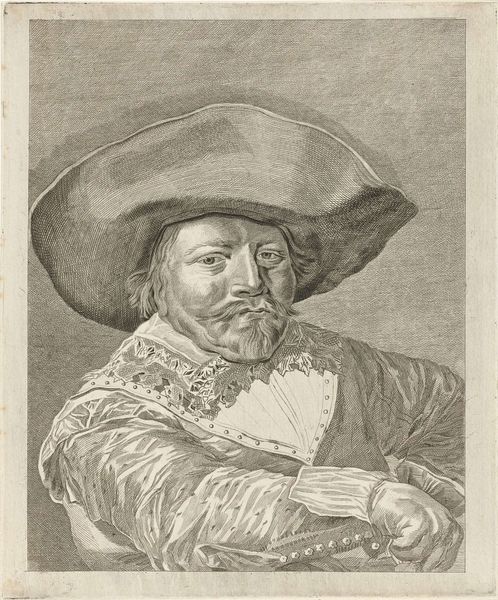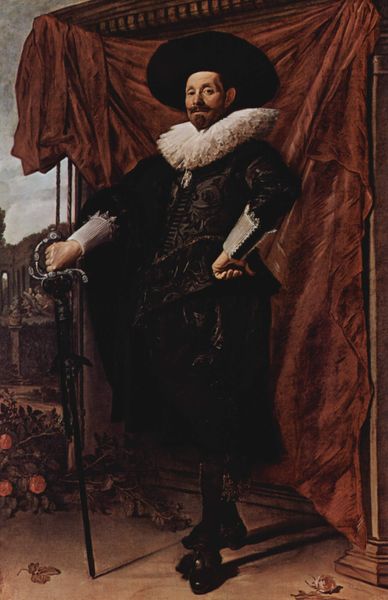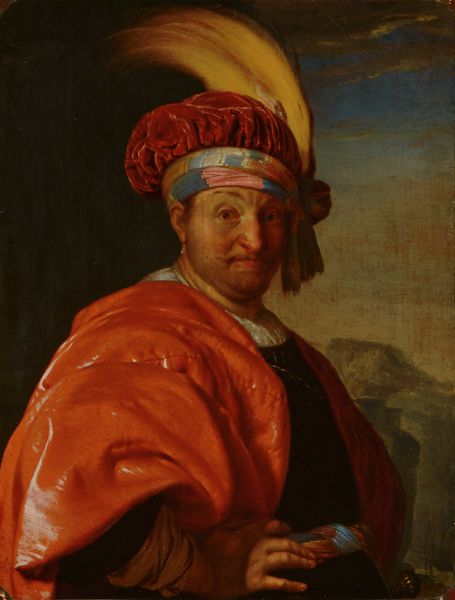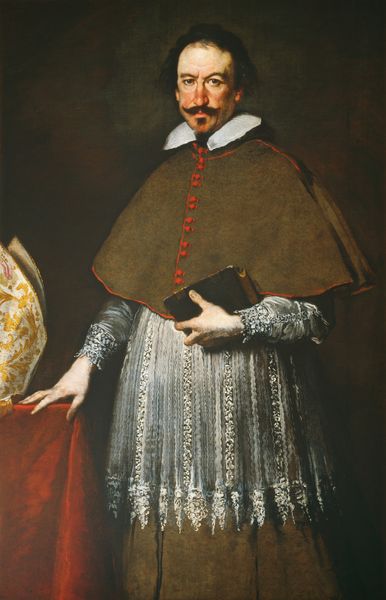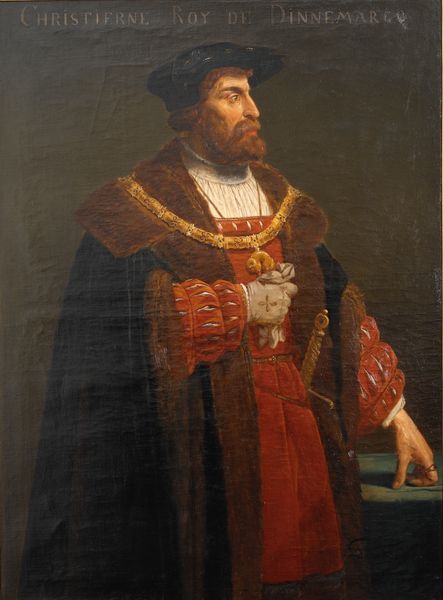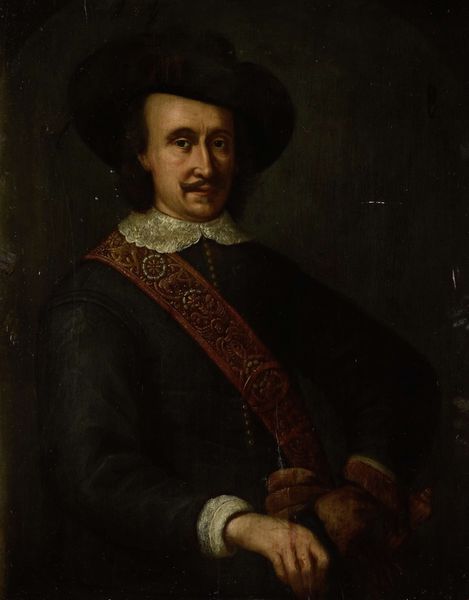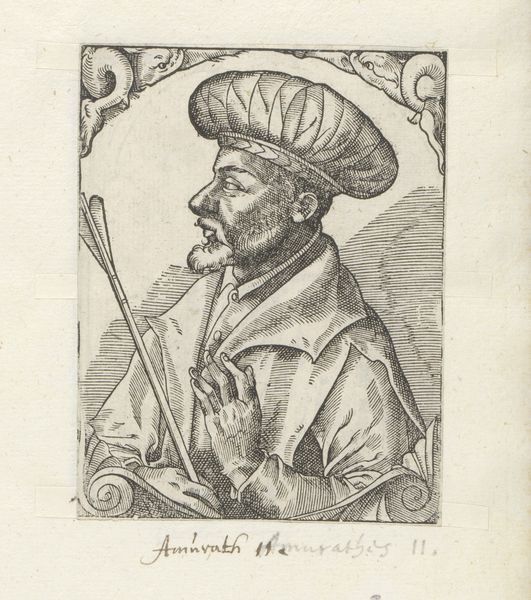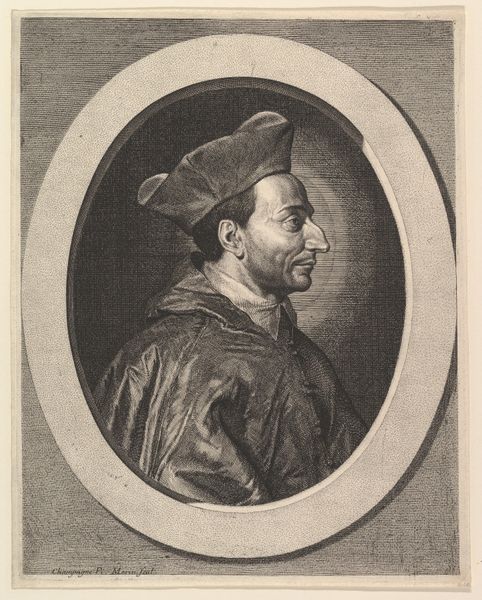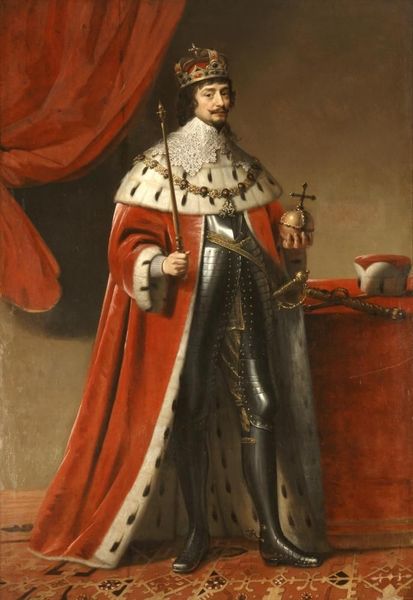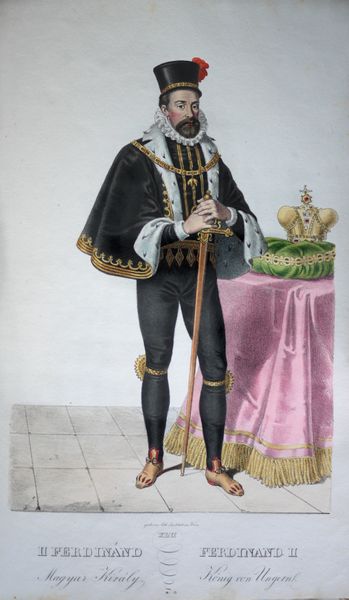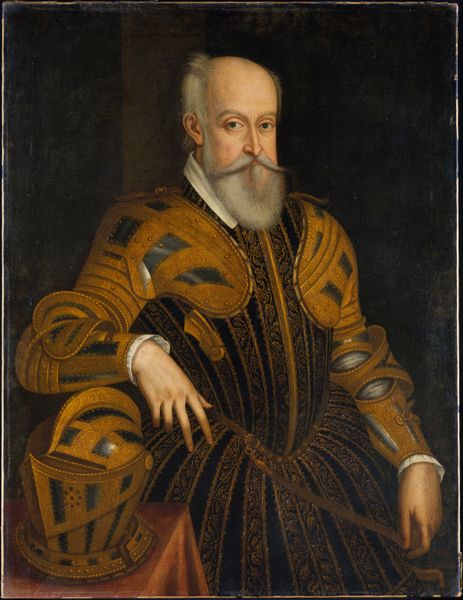
oil-paint, wood
#
portrait
#
african-art
#
baroque
#
oil-paint
#
oil painting
#
wood
Dimensions: 75 cm (height) x 62 cm (width) (Netto), 85.6 cm (height) x 73 cm (width) x 7.3 cm (depth) (Brutto)
Curator: Look at this stunning portrait, "Dom Miguel de Castro, Emissary of Congo," created between 1641 and 1645. Editor: My first thought is one of quiet dignity, rendered with impressive material opulence. The scale seems intimate, the dark palette contrasting sharply with the exquisite textures of his garments. Curator: Indeed. Painted by an anonymous artist, it's an oil on wood panel currently housed at the SMK, the National Gallery of Denmark. Beyond the visual splendor, though, lies a complex narrative of cultural exchange and colonial power. Dom Miguel served as an emissary during a turbulent time between Congo and Europe. We can’t separate the beauty from the brutality inherent in this power dynamic. Editor: Absolutely. And the meticulous detail in his clothing, those shimmering fabrics and that elaborate sash – I see a real display of craftsmanship, perhaps commissioned specifically for the painting. What does it reveal about how labor and resources were organized back then to produce such a luxurious item? We can examine its material properties and see its relationship with trade and colonial power. Curator: It underscores the constructed nature of identity and representation, how notions of power and diplomacy were visually articulated. The fact that the artist is unknown also raises questions about authorship and agency in the context of colonial art production. Whose perspective are we really seeing here? Editor: Exactly. The portrait acts as a document but also a product, one born out of a set of economic and social circumstances that need unraveling. It seems almost ironic the Congolese envoy would need to present his diplomatic value via colonial-influenced aesthetics. Curator: The gaze directed outward is powerful and challenges contemporary notions of race and representation, particularly during a time of such profound upheaval and systemic racism. How do we reckon with its lasting legacy and its ongoing impact? Editor: Looking at the visible layers of paint, imagining the brushstrokes… I consider how it would affect my analysis to know how locally sourced vs. colonial sourced were these raw materials. The very matter speaks volumes! Curator: That kind of detailed analysis is so important, because ultimately, we must never forget the layered identities this artwork presents, and the complexities behind the image itself. Editor: Precisely, understanding the painting as an object entangled with historical and material forces. Hopefully our perspectives helped others see how even beautiful images are complex records.
Comments
No comments
Be the first to comment and join the conversation on the ultimate creative platform.
